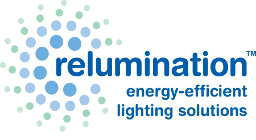The New York Times “Green” blog recently posted an entry about Lights of America, a light bulb manufacturer based in California, that is being sued by the Federal Trade Commission for printing misleading information on their LED lamp packages. The FTC found that while the lamps claimed to have a similar light output as a 40-watt incandescent bulb, which is about 400 lumens, the LED lamps produced only 74 lumens. The package also claimed the LEDs were expected to last 30,000 hours, but lost 80% of its light output after a mere 1,000 hours. Brian Halliwell, vice president or marking and sales of Lights of America, said they removed the comparison of performance to the incandescent bulb and fixed the lifetime claim. This is the first lawsuit brought against an LED manufacturer for false specifications by the FTC. It makes you wonder how many more companies are printing fictitious labels.
Lucky for consumers, there are a number of tests manufacturers can submit their LED products to for testing. The results and seals of approval from these tests are usually printed right on the package.
- Lighting Facts – This is a program sponsored by the United States Department of Energy that manufacturers submit their products to for unbiased testing. A “Lighting Facts label” is printed on the packages with the results from the tests.
- LM -79 – This is used to evaluate the number of lumens and number of lumens per watt the lamp is producing, intensity of light, color correlated temperature (CCT), and color rendering index (CRI).
- LM-80 – This test measures lumen maintenance. LED lamps don’t usually “burn out” like other light bulbs do at the end of their life. Its light slowly depreciates until it is unusable. The LM-80 doesn’t measures the depreciation rather than the lifetime of the lamp.
- Underwriters Laboratories Inc. (UL) – The UL tests the safety of LED products under UL8750, which is the “Safety Standard for Light Emitting Diode (LED) Equipment for Use in Lighting Products.” UL examines the lamps to see if there is a risk of shock by using the lamp, if it will catch fire, and if any there are any biological hazards from using the product.
Relumination stresses the importance of buying LED products that have been tested and approved by one or more of these programs. We continue to offer our customers products with one or more of these ratings.





